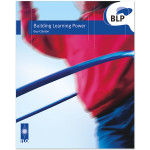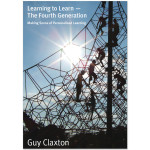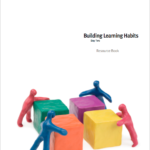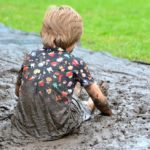Benefits of this blended learning programme for the school
Our blended learning programmes are guided by best practice thinking in professional development. This means we blend online information with in-school learning teams. Our researched information comes to you online. You discuss and explore it in learning teams across the school. Teachers then plan, use and share the changes they want to make in their classrooms. This way of learning together organises a consistent school-wide approach to developing students’ learning behaviours and:
- Shifts the culture of the school to becoming more learning friendly
- Focuses learning teams on a gradual change process
- Builds expertise right across the school
- Ensures the school STARTS and STAYS on a proven right track
- Ensures you build better learners RIGHT not LITE
- Organises professional development activities throughout a year
- Scaffolds in-house training, saving cover costs for external courses
- Has a far greater impact on classroom practice than traditional staff development activity.
The online input blended programme includes;
Introducing Building Learning Power: a DIY resource pack
This online Resource Pack introduces school leaders and staff to the why, what, and how of developing learning power in school, without the need for a consultancy day. It offers the big picture frameworks, principles of the approach, and practical examples of classroom activities. It acts as a primer for the Learning Habits in a Nutshell online programme, using a range of resources including presentation slides, informative papers, and short online units. The organisation of the resources aim to ensure Learning Power flourishes in the long term by paying attention to three layers of practice and giving particular emphasis to managing and supporting change
The Resource Pack has three sections.
- Strategic.. the essence of the big strategic issues
- Chalkface… the implications for classroom practice
- Management… the implications for managing this to happen
Each of the three sections deal with four topics of Building Learning Power:
- Topic A Learning Power.The What and Why…the need for change and the sort of changes needed.This section covers the level of detail that will be vital for senior leaders and school governors.
- Topic B The supple learning mind...the framework of learning behaviours of successful learners. It offers an overview of the habits of better learners, the implications for classroom practice, and the essential features of managing the approach
- Topic C Learning friendly cultures… the classroom culture that best supports the development of learning habits. It briefly unpacks the idea of a learning friendly culture and how classrooms can better nurture powerful learners by devolving more responsibility for learning to students, starting a language for learning, and flipping the culture to valuing mistakes and being stuck.
- Topic D Growing learning habits… how learning behaviours strengthen into habits through learning powered teaching. It considers how everyday learning habits might progress to become learning behaviours, and the implications of such growth for classroom practice. It also offers ways in which managers might capture this progression to improve practice.
Section 1: Strategic: the strategic issues, the big ideas.
In the Strategic section, for each of the four topics, you will find the big strategic issues, the principles and models, the must dos and the ‘be good ifs’ of Building Learning Power. boiled down to their essence. The aim is to help senior leaders get to grips quickly with the main ideas and how to make them work.
4 Strategic presentations cover the what and the why; the supple learning mind; learning friendly cultures; growing learning habits.
There are links to further information to deepen or extend the key issues raised in the slides… offered to quench your critical curiosity, not as must read items. Here there may be;
- a link to an appropriate blog;
- a link to specific deeper information in our extensive bank of resources;
- a link to a page/chapter/idea in one of our BLP books;
- suggestions for further/wider reading elsewhere.
Section 2: Chalkface: The implications for classroom practice.
In the Chalkface section, for each of the four topics, you will find the implications of the strategic issues unpacked for classroom practitioners; the how to’s.
4 Chalkface presentations cover; the what and the why; the supple learning mind; learning friendly cultures; growing learning habits
For some of the topics we offer materials to download for use with the slides. e.g. a resource booklet for a training day that you can deliver for your school.
Links to Online units For some topics we offer links to short online units that serve to enhance the information covered in the slides. Staff can view and reflect on these at their own pace, in their own time.
- Online unit about the supple learning mind
- Online unit exploring classroom culture
Links to further information deepen or extend key issues. Offered to quench critical curiosity not as must dos.
Section 3: Management: The implications for managing change.
Here we raise the management implications of supporting the strategic and classroom practice issues raised above. Without strong and sustained management support the development of learning powered learners is unlikely to take hold.
4 Management presentations cover: the what and the why; the supple learning mind; learning friendly cultures; growing learning habits.These slide decks could be used to: structure learning conversations with and for managers; inform managers of what has worked elsewhere; act as a checklist of what needs ongoing attention. Each slide has brief explanatory notes.
Data gathering materials. Monitoring the developments across the school is a key management role in making the development of learning power successful. To this end we offer useful, downloadable questionnaires and other review materials for the first year of the journey.
Links to further relevant information… offered as curiosity quenchers not as the answers to everything. Here there may be:
- a link to an appropriate blog;
- a link to an online unit to do with managing the development of learning power;
- a link to specific information from our extensive banks of resources;
- suggestions for further reading
Through these three sections you will find enough carefully curated material to give the school a fighting chance of making learning power come alive in your students and work well in your school.
 Book bundle
Book bundle
One copy per participant of …

Building Learning Power

Learning to Learning – The fourth generation

Resource book of materials for each of the training days
Learning Habits in a Nutshell, online training package
Overview
Phase 1 of the Nutshells programme consists of eleven online units, most of which can be expected to take about four to six weeks to implement in classrooms.
The programme includes a resource guide Strategic issues and coaching notes for senior leaders and team leaders, on how the units might best be used.
The units are:

1. Introducing Nutshells Phase 1: A culture for building powerful learners

2. Building active participation

3. Building shared responsibility

4. Building dialogue and collaboration

5. Building progression in Perseverance, Overview

6. Engaging students in unsticking their learning

7. Engaging students in rising to the challenge

8. Engaging students in managing distractions

9. Engaging students in achieving goals

10. Reviewing our progress

11. Strategic issues and coaching notes
Each online unit is divided into four sections:
Three sections which teachers look at individually
Teachers work their way through the materials at a time and place to suit them. The three sections will usually take a total of about 30-45 minutes to work through and think about. The materials introduce new thinking and practical ideas for staff to get their heads around prior to their team session.
A Professional Learning Team meeting section
Staff come together as learning teams at approximately monthly intervals (typically six to eight staff per team). They share and discuss how they have moved their practice to learning friendly cultures, consider new material introduced in the online learning sessions, and plan learning enquiries to be implemented in the next month. Each team session is planned to last about an hour.
The online units in detail

1. A Culture for building Powerful Learners
Best used as the first unit, this unit unpicks the meaning of classroom cultures; offers a learning power culture instrument to assess where your classroom culture is now; explores shifting relationships in learning friendly classrooms and suggests ways to ready your culture for learning.
Learning cultures. A big shift?
Unpick the meaning of classroom cultures, what they might consist of and the big shifts that may be needed to develop better learning. Use the culture tool to estimate where your classroom culture is now.
Learning friendly cultures; Lots of little shifts.
Find out about the four big dimensions of culture and use the culture tool 2 to estimate the sorts of shifts your classroom culture would benefit from.
Your classroom culture. Some ideas to get you started.
Look for ideas to strengthen your learner/learning classroom culture.
Team reflection and planning.
Share the results of your culture analysis with colleagues. Make plans for what everyone needs to do and what you will each do individually.
The following three units aim to help teachers to explore and work on specific aspects of and shifts in learning friendly cultures. They can be taken in any order.

2. Building active participation
This unit supports teachers to explore and experiment with ideas that counter student passivity and build active participation.
It includes sections on the meaning of active participation; a review tool to consider the extent to which students are currently actively participating; some classroom ideas that support active participation; guidance on experiments to create active participators; and a review tool to evaluate the impact of those experiments.
 3. Building responsibility
3. Building responsibility
This unit supports teachers to explore and experiment with ideas that counter learner dependency and learned helplessness, and that begin to move responsibility for learning towards students.
It includes sections on what we mean by sharing responsibility for learning; a review tool to consider the extent to which students currently exercise responsibility; some classroom ideas that support the gradual devolution of responsibility to students; guidance about how you might experiment to create students who are willing and able to take on such responsibility; and a review tool to evaluate the impact of those experiments.
 4. Building dialogue and collaboration
4. Building dialogue and collaboration
This unit enables teachers to explore and experiment with ideas that lay the foundations for classrooms becoming dialogue-rich communities of learners.
It includes sections on what we mean by a community of learners; a review tool to consider the extent to which students currently act as a learning community; some classroom ideas that support the move towards building a community of learners; guidance about how you might experiment to create a learning community in your own classroom; and a review tool to evaluate the impact of those experiments.
Beyond establishing classrooms as communities of learning, schools find that many of their students still need to get better at tolerating the feelings of learning and improve their perseverance. Hence the programme now delves deeply into Perseverance in an attempt to develop students’ learning-positive attitudes.
 5. Progress in Perseverance
5. Progress in Perseverance
This mini-unit is an information unit, it does not suggest practical ideas for improvement. As such it should be coupled with one of the four perseverance units below.
Perseverance is key to the learning journey. It is vital that students are able to get to grips with the knotty emotions of learning, and can view and use them positively as aids to the journey, not as setbacks.
This unit aims to:
- help teachers to explore the components of the big picture of perseverance, how it’s made up
- analyse where their students currently function in relation to progress in perseverance
- look briefly at their own practice in developing a perseverant friendly culture
The following four units delve deeper into each aspect of perseverance, helping students’ to grow learning-friendly attitudes.
 6. Engage students in unsticking their learning.
6. Engage students in unsticking their learning.
This unit aims to:
- help teachers to analyse how their students behave and feel about being stuck;
- look at their own classroom practice in developing a ‘stuck’-friendly culture;
- suggest practical strategies to increase students’ skill and confidence in dealing with being stuck;
- assist teachers to adapt their practice using a learning enquiry method (Team reflection and planning).
 7. Engage students in rising to the challenge
7. Engage students in rising to the challenge
This unit aims to:
- help teachers to analyse how their students’ feel and behave when faced with challenge
- look at their own classroom practice in developing a learning-challenge-friendly culture
- suggest practical strategies to increase students’ skill and confidence in dealing with challenge
- assist teachers to adapt their practice using a learning enquiry method (Team reflection and planning).

8. Engage students in Managing Distractions.
This unit aims to:
- help teachers to analyse their students’ awareness of and strategies for being distracted
- look at their own practice in developing a learning culture that helps students to maintain focus
- suggest practical strategies to increase students’ skill and confidence in dealing with internal and external distractions
- assist teachers to adapt their practice using a learning enquiry method (Team reflection and planning).

9. Engage students in achieving goals.
This unit aims to:
- help teachers to analyse how their students think and feel about pursuing goals
- look at their own classroom practice in developing a goal friendly culture
- suggest practical strategies to increase students’ skill and confidence in pursuing goals
- assist teachers to adapt their practice using a learning enquiry method (Team reflection and planning).
The final unit in Nutshells Phase 1 is designed to enable you to review your progress so far.
 10. Reviewing our progress
10. Reviewing our progress
A rich variety of tools help you review your progress in developing a learning culture in your classrooms. This review will provide you with relevant information on which to base your approach in the next phase of building students’ learning powers.

11. Strategic issues and coaching notes
This module is intended to help learning champions make the most of the Nutshells 1 module material. It is a must read for senior leaders and team leaders who will be taking a strategic responsibility for building better learners.
Sections 1–4 consider:
Reflecting on your changing practice
Looking at what you have done and how your classroom has changed. This section answers the question ‘How far have you come?’
Giving students a voice
Finding out how your students have benefitted. This section answers the question ‘How well have the students taken to this way of learning?’
Learning with and from colleagues (Team reflection and planning)
Learning from learning walks and observations. This section answers the question ‘What are the variations on the theme and what can I learn from these variations?’
Team session: Learning together
Putting your heads together and thinking ‘What next?’ This team session answers the questions ‘How are we doing, how are our students doing and where do we need to go next?’



 Book bundle
Book bundle
